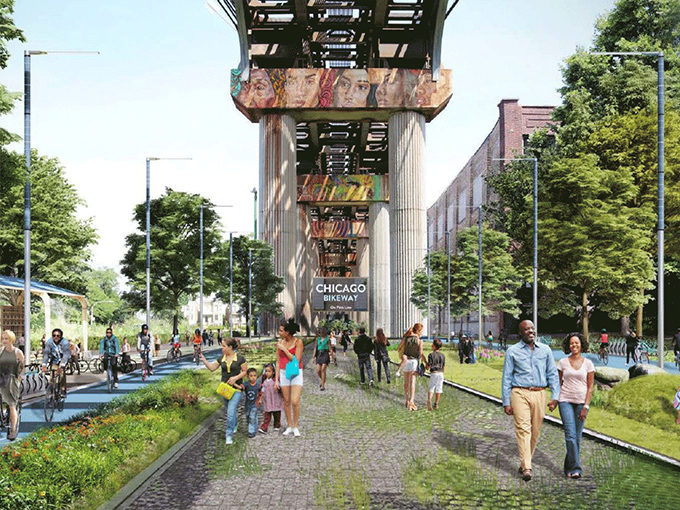
The current crisis has highlighted long-standing issues around the livability, safety, equity, and sustainability of streets, while placing new demands on residents, workers, and businesses as they tried to adapt to the spatial implications of the contagion. Cities around the globe responded with a speed unprecedented in peacetime, rolling out a range of adaptive measures.
…
As the technology of transportation advances, experts widely agree that it should be employed to facilitate good design rather than vice versa. SOM and the technology-based innovation nonprofit City Tech Collaborative recently teamed up to develop a set of ideas, with input from multiple stakeholders, on how streets in Chicago could evolve over the next 10 to 30 years. Design concepts, modeled on that city’s typical street types, take account of new technologies such as access to real-time information on personal devices about transit service and on-demand cars; innovations in equipment, like autonomous vehicles and faster telecommunications; mobility trends, including electrification and the rise of micro-transit; and functional priorities: freight and logistics, public transit, personal vehicles, cycling, and walking. Arising from these considerations come a set of predictions, strategies, components, and case studies for tailoring solutions to neighborhood conditions.